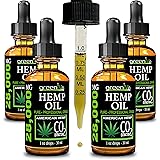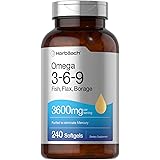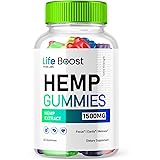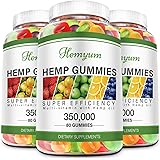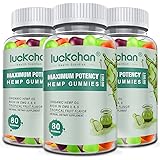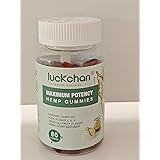The cosmetics and personal care industry constantly seeks innovative ingredients. Natural extracts are particularly popular. Among these, cannabis, hemp, and CBD in cosmetics have gained significant attention. They offer unique benefits for various skin concerns. However, navigating their use involves scientific understanding and complex regulatory compliance.
As highlighted in the accompanying video, Belinda Carli provides an excellent overview of this dynamic space. This article further explores the science, benefits, and critical regulatory nuances. It also delves into exciting ingredient innovations. These insights are crucial for formulators and product developers alike.
Understanding Cannabis, Hemp, and CBD in Cosmetics
The terms “cannabis,” “hemp,” and “CBD” are often used interchangeably. This causes considerable confusion. A clear distinction is essential for cosmetic applications. All these materials originate from the *Cannabis sativa* plant. However, their chemical composition varies greatly. This dictates their legal status and cosmetic utility.
Clarifying Key Terms: Marijuana, Hemp, and Cannabidiol
*Cannabis sativa* is the botanical name for both marijuana and hemp. The primary differentiator lies in their cannabinoid content. Cannabinoids are chemical compounds found in the plant. The most well-known are Tetrahydrocannabinol (THC) and Cannabidiol (CBD).
Marijuana contains high levels of THC. THC is the psychoactive component. It causes the “high” associated with cannabis use. Marijuana also contains varying levels of CBD. Conversely, hemp is specifically cultivated to contain very low THC levels. Legally, industrial hemp must contain less than or equal to 0.3% weight for weight THC. This threshold is critical for its classification and legality. Hemp generally contains much smaller, yet varying, amounts of CBD.
CBD, or cannabidiol, is a non-psychoactive cannabinoid. It has garnered significant interest for its potential therapeutic properties. These include anti-anxiety, pain relief, and anti-inflammatory effects. In cosmetics, CBD from hemp is often favored. This avoids the psychoactive implications of THC. It allows formulators to harness its skin benefits safely and legally.
The Evolving Promise of CBD in Skincare Formulations
A growing body of scientific evidence supports CBD’s role in cosmetics. It offers a range of beneficial properties. These properties address various skin concerns. Consequently, CBD is becoming a sought-after ingredient. Its versatility makes it suitable for diverse product types.
Key Benefits of Cannabidiol for Skin Health
CBD interacts with receptors in the skin’s endocannabinoid system. This interaction mediates many of its positive effects. Its anti-inflammatory capabilities are particularly notable. Furthermore, its soothing properties make it ideal for sensitive skin. Here are some primary benefits:
-
Soothing and Anti-Inflammatory Effects: CBD excels at calming irritated skin. It reduces redness and general skin sensitivity. This leads to a more even and comfortable complexion. It can significantly alleviate discomfort caused by various skin conditions. Thus, it is a valuable ingredient in calming formulas.
-
Sebum Balancing for Acne-Prone Skin: Excess sebum production contributes to acne. CBD helps to regulate sebum secretion. This action can minimize clogged pores and breakouts. Moreover, its anti-inflammatory nature helps control acne-related inflammation. This provides a more pleasant experience for users. Therefore, it is an excellent addition to anti-acne product ranges.
-
Anti-Aging and Skin Smoothing: CBD promotes smoother skin texture. This can visually reduce the appearance of fine lines and wrinkles. Its antioxidant properties further protect the skin. Antioxidants combat free radical damage. Free radicals contribute to premature skin aging. Therefore, CBD supports youthful-looking skin. This makes it suitable for anti-aging cosmetic formulations.
-
Moisturization and Barrier Support: CBD can contribute to improved skin hydration. It helps to strengthen the skin’s natural barrier function. A healthy skin barrier retains moisture more effectively. It also protects against environmental aggressors. This leads to softer, more supple skin. Enhanced barrier function is key to overall skin health.
Navigating Global Regulations for CBD and Hemp Cosmetics
The regulatory landscape for CBD in cosmetics is complex. It also changes rapidly across the globe. Formulators must stay informed about local regulations. These rules determine what ingredients are permitted. They also specify permissible concentrations. Non-compliance can lead to severe legal and financial repercussions. Therefore, thorough due diligence is paramount.
Regional Regulatory Overviews: A Snapshot
Different countries and regions have adopted varying approaches. This reflects diverse perspectives on cannabis-derived ingredients. The legal status of CBD is particularly contentious. It often depends on its source and purity. Formulators must verify all local requirements before market release.
-
ASEAN Regions: These typically follow EU regulations. However, some individual ASEAN countries may impose additional restrictions. These local regulations can supersede standard cosmetic guidelines. Consequently, specific product permission can vary. Formulators must conduct country-specific checks.
-
Australia: Cosmetics may contain CBD from hemp seed oil. The maximum permitted CBD content is 50 milligrams per kilogram (0.005% w/w). THC content must not exceed 20 milligrams per kilogram (0.002% w/w). Products exceeding these limits are not permitted. Strict adherence to these thresholds is enforced. These regulations aim to prevent psychoactive effects.
-
Canada: CBD itself is generally banned in cosmetics. However, hemp oil free from CBD is permitted. This distinction is crucial for Canadian market entry. The regulatory framework treats CBD as a controlled substance. Formulators must ensure their hemp oil is CBD-free. This ensures legal compliance for cosmetic use.
-
European Union (EU): CBD derived from hemp seed oil is allowed. Synthetically produced CBD is also permitted. However, CBD extracted from other plant parts may be restricted. Importantly, individual EU member states may have additional or differing regulations. Therefore, local country regulations must always be verified. This ensures compliance within specific markets.
-
New Zealand: Similar to Canada, CBD is banned in cosmetics. However, hemp oil is permitted. This is contingent on it not containing any CBD. Formulators must confirm the absence of CBD in their hemp oil. This ensures compliance with New Zealand’s cosmetic laws.
-
United States (US): Regulations are highly state-dependent. CBD is generally permitted in states where marijuana is legalized for recreational use. Its status may differ significantly in other states. The FDA maintains a cautious stance on CBD in products. Federal and state laws can also conflict. Checking with local state regulations is absolutely essential. This applies especially where marijuana remains illegal.
The Role of Safety Testing and Public Perception
Regulators prioritize public safety. They aim to prevent misuse or misleading claims. Safety tests are therefore critically important. Where robust evidence is lacking, regulators tend to be more cautious. As more scientific evidence emerges regarding safety and benefits, regulations may evolve. This dynamic environment requires continuous monitoring. Transparent communication with consumers is also vital. This builds trust and addresses public concerns effectively.
Innovations in CBD and Hemp Cosmetic Ingredients
Despite regulatory challenges, innovation thrives in this space. Cosmetic ingredient suppliers are developing advanced solutions. These innovations offer enhanced efficacy and better compliance. They allow formulators to leverage the benefits of CBD in cosmetics more effectively. New technologies focus on standardization, delivery, and diversified options.
Cutting-Edge Ingredient Technologies
Modern ingredient science addresses many formulation hurdles. Standardization ensures consistent performance and easier regulatory navigation. Encapsulation technologies improve stability and targeted delivery. Furthermore, botanical innovations provide CBD-free alternatives. These alternatives offer similar benefits without the regulatory complexities.
-
Biochemica CBD Hemp Butter by Hallstar: This innovative material features a standardized CBD content. Standardization is key for consistent product performance. It also simplifies regulatory compliance. This hemp butter offers all associated moisturizing and skin-soothing benefits. It provides a reliable option for formulators. This is particularly true in regions where CBD is permitted.
-
Lipobelle Pino C by Mibelle: This solution utilizes encapsulated CBD. Encapsulation protects the active ingredient. It also ensures enhanced delivery and performance. It is paired synergistically with pine extract. This combination offers outstanding clinical efficacy. It effectively evens out complexion. Furthermore, it smooths skin roughness. Impressively, it can reduce wrinkles by up to 28% in 28 days. This represents a significant advancement in anti-aging cosmetic ingredients.
-
Vantage Lipobeads (Bronze and Leaf Green): Vantage offers two distinct encapsulated hemp oil versions. Lipobead Bronze contains no CBD. Lipobead Leaf Green, however, includes CBD. This provides formulators with flexibility. They can choose based on regional regulatory requirements. Both options feature a visually appealing encapsulation story. This ensures effective delivery of either hemp oil or CBD.
-
Hemp Tein Z NPNF by Tri-K: This is a hydrolyzed cannabis extract. It has proven benefits for both hair and skin. It clinically improves hair elasticity. For skin applications, it strengthens the skin barrier. It also smooths and hydrates the skin. This reduces skin scaliness. This ingredient offers broad utility in personal care products. It harnesses the power of cannabis without regulatory concerns over CBD.
-
Kannabia Sense by Vytrus Biotech: This unique ingredient utilizes cannabis stem cells. Significantly, it contains no CBD. This bypasses many regulatory hurdles. It also communicates with the skin microbiota. This ingredient offers a comprehensive neurocosmetic story. It includes anti-aging and skin smoothing benefits. Kannabia Sense can even modulate mood state. This is achieved by interacting with the skin’s microbiome. It represents a truly exciting innovation in the CBD in cosmetics space.


